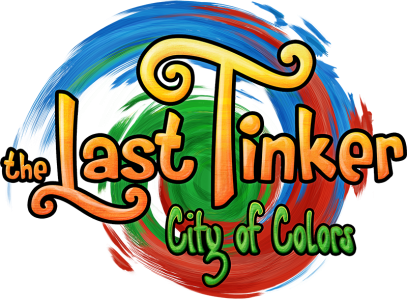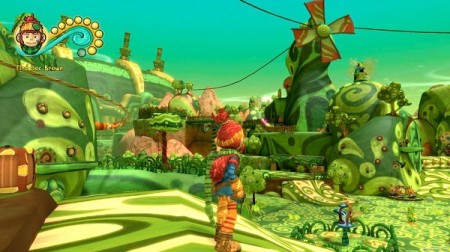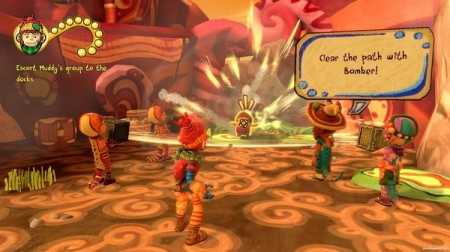In a world divided by color, one man (er…monkey?) must uncover his true self and unite them all.
The Last Tinker: City of Colors is a vibrantly colorful game that will immediately bring to mind the cheerful, color-laden platformers of our youth. For one who grew up when the platformer was king, it is a breath of fresh air to see the genre getting a revival in this definitely family-friendly game. However, those looking for the familiar perfectly timed jumps and often soul-sucking challenge may end up a bit disappointed in the final product.
In The Last Tinker: City of Colors, you play as young Koru, who resides in Tinkertown. Once a harmonious nation, Tinkertown has found itself divided into three different districts, separated by their color. The red district holds a rage filled citizenry, while the blue district holds characters filled with sadness, and the green district’s people run scared. As you advance in the game, Koru will be able to use these characteristics to his advantage, but the ultimate goal is to unite the people of Tinkertown once more. It’s a somewhat loaded concept, with obvious undertones referencing racism and segregation, but it’s very light handed and left to the interpretation of the player. Gamers young and old can unite in the theme of working together, and the options for kid mode and colorblind mode make it very accessible to all types of gamers.
The controls in The Last Tinker: City of Colors are where the similarities to those bygone platformers fade away. Rather than giving Koru the ability to run and jump and scale with whatever precision the player possesses, a lot of the work is simply done for you. There vines to climb, obstacles to jump nimbly across, and rails to slide, but all of that is done simply by holding the space bar and pointing Koru in the right direction. There isn’t even a jump button, which is somewhat odd given how much attention was paid to detail in the game. The vibrant and artistic world of Tinkertown is a joy to look at, with colors that pop right out of the screen, quirky characters that hold the attention, and a made from paper look that really draws the eye. The music is equally entrancing, with a soundtrack that is a perfect complement to the rest of the game.
There are a variety of ways to control Koru, from keyboard to mouse to controller support – but they are definitely not equal. Using keyboard controls can be quite frustrating, particularly for young players, as the controls are all over the board and not very intuitive for more complicated situations such as combat. The mouse controls fare somewhat better, but again are not ideal. With actions being assigned to scroll up and scroll down, as well as left and right click, it does take a little getting used. If you have one available, controller is really the way to go, as the controls make a lot more sense that way. Regardless of control, you may find some frustration with the camera, particularly during combat, where the game seems to randomly assign targets regardless of who you actually want to hit, swinging the camera along with it.
Overall, The Last Tinker: City of Colors is a family friendly game that has a lot to offer to the right gamer. There’s an interesting story line that serves well to keep the player engaged in the action. There is a variety of gameplay, from very simple platforming to challenging puzzles to increasingly involved combat – all made the better with the help of a few adorable little friends. While there are definitely some social undertones in play, the game itself is completely unobjectionable, offering G-rated fun for even young gamers (who will likely appreciate to simplified platforming – although since voice acting was replaced with text boxes, they may need a little help along the way). For gamers looking for a challenging old school style platformer, keep looking. For those looking for a colorful and downright fun game that is appropriate for the whole family, The Last Tinker: City of Colors is well worth a play through.
 BrutalGamer Bringing you Brutally Honest feedback from today's entertainment industry.
BrutalGamer Bringing you Brutally Honest feedback from today's entertainment industry.








